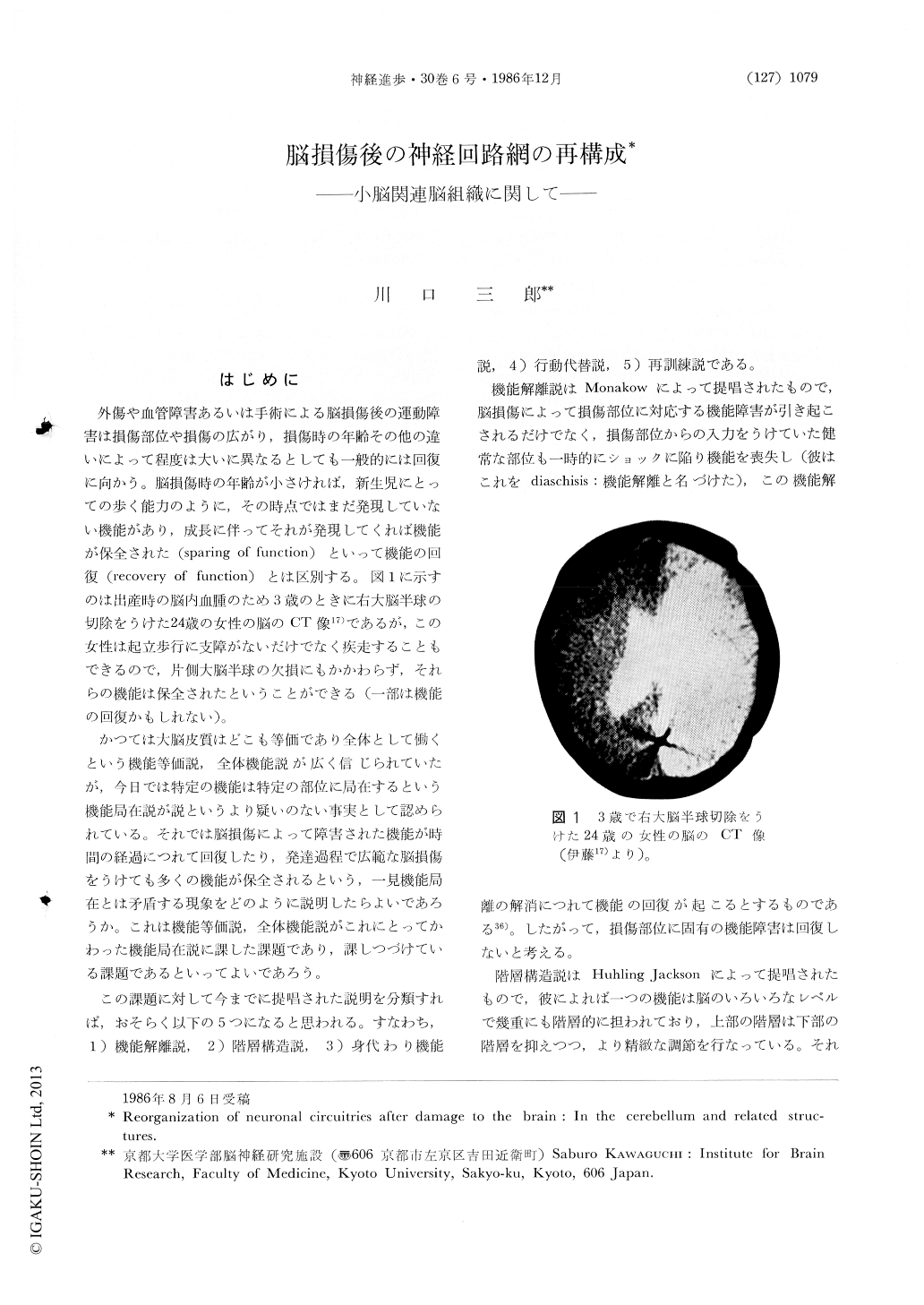Japanese
English
- 有料閲覧
- Abstract 文献概要
- 1ページ目 Look Inside
はじめに
外傷や血管障害あるいは手術による脳損傷後の運動障害は損傷部位や損傷の広がり,損傷時の年齢その他の違いによって程度は大いに異なるとしても一般的には回復に向かう。脳損傷時の年齢が小さければ,新生児にとっての歩く能力のように,その時点ではまだ発現していない機能があり,成長に伴ってそれが発現してくれば機能が保全された(sparing of function)といって機能の回復(recovery of function)とは区別する。図1に示すのは出産時の脳内血腫のため3歳のときに右大脳半球の切除をうけた24歳の女性の脳のCT像17)であるが,この女性は起立歩行に支障がないだけでなく疾走することもできるので,片側大脳半球の欠損にもかかわらず,それらの機能は保全されたということができる(一部は機能の回復かもしれない)。
かつては大脳皮質はどこも等価であり全体として働くという機能等価説,全体機能説が広く信じられていたが,今日では特定の機能は特定の部位に局在するという機能局在説が説というより疑いのない事実として認められている。それでは脳損傷によって障害された機能が時間の経過につれて回復したり,発達過程で広範な脳損傷をうけても多くの機能が保全されるという,一見機能局在とは矛盾する現象をどのように説明したらよいであろうか。
Functional recovery or sparing of function after damage to the brain has been a challenge to the doctorine of localization of function since it took over the view of mass action or equipotentiality. Several explanations such as 'diaschisis', 'vicarious function', 'hierarchical arrangement', 'behavioral substitution', or 'retraining' have since been offered, without anatomical and physiological foundation, to reconcile recovery and localization. In neurophysiological aspect, it is an unquestionable concept that the compensatory function of the brain can be ascribed to plastic changes in synaptic transmission or neuronal connection or both. Electrophysiological and morphological studies of recent years provided evidence for the occurrence of such changes during recovery after damage to the brain, although causal relation between each change and behavioral recovery is generally unclear. This article attempts to give some insight in the mechanisms of compensatory function from the standpoint of neurophysiology and neuroanatomy by reviewing reorganization of neuronal circuitries mainly in the cerebellum and related structures.

Copyright © 1986, Igaku-Shoin Ltd. All rights reserved.


